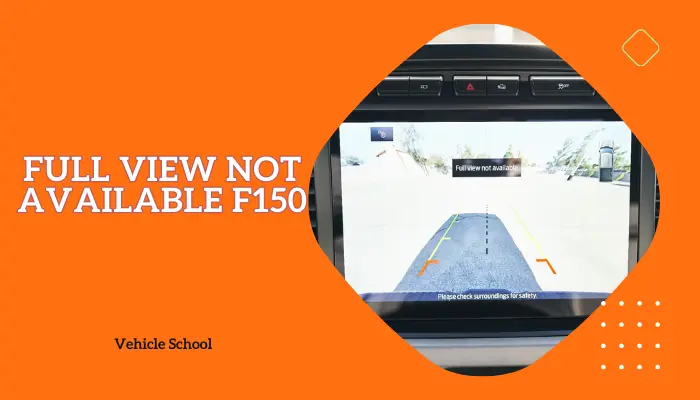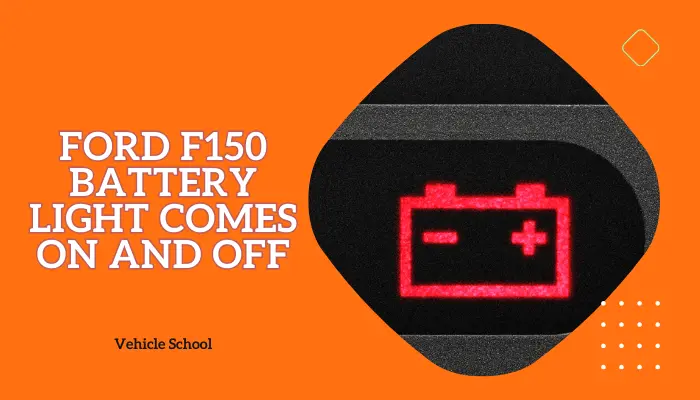Ford F150 Body Control Module (BCM) problems can manifest in various ways, particularly in models like the 2016 F-150 Roush. Common issues include BCM failures, often due to corrosion, which may require a new module (C2280F) and harness (14401). Faulty connections or issues with the CAN bus, where multiple modules are connected, can also lead to system malfunctions.
It’s advisable to have any BCM concerns verified by a professional, and if replacement is necessary, a new factory module should be installed and programmed by a dealer.
Additionally, a faulty ground under the battery tray can cause significant electrical issues, and should be checked if problems arise. Used BCMs, even with the associated key FOB and door code, cannot be reprogrammed at Ford dealerships, making new replacements the recommended solution.
Your truck’s BCM is prone to issues arising from wiring or water damage, jeopardizing its security. To ensure that doesn’t happen, continue reading my guide for more details on the bad BCM problems of the F150.
Ford F150 BCM Failure Symptoms
So, what happens when the body control module goes bad? These are the symptoms of a bad BCM:
- Unusual Dashboard Warning Lights: A bad BCM can trigger unexpected dashboard warning lights due to communication breakdowns with other modules.
- Check Engine Light Flashes: The F150 Check Engine Light indicates a communication problem between the BCM and other control modules.
- Accessories Act Weird: A faulty BCM can make accessories behave strangely, like turning on high beams and making windows roll down. In some cases, you’ll find that only certain accessories will work.
- No Crank No Start: You’ll have trouble starting the engine if the BCM fails to recognize the key’s transponder chip or doesn’t send the correct signal from the ignition switch.
- Excessive Battery Drainage: A bad BCM can cause a lot of battery drain by supplying power to accessories at the wrong times, for which F150 center console light stays on and affects your F150’s reliability.
- Messed Up Security System: Persistent issues with keyless entry or passive entry systems may point to a faulty BCM, which manages the security system.
What Causes Ford F150 Body Control Module Problems?
Ford F150 Body Control Module problems stem from wiring issues like corroded connectors worsened by cold weather, water damage via cracked rear sliding window channels, and ensuing corrosion leading to electronic malfunctions.
In this section, I’ve shared more details on the reasons why your BCM breaks and how you can fix them. Keep in mind that these reasons and fixes apply to F150s from 2011 to present models.

1. Wiring Problems
The 2011 F150 5.0L XLT can run into BCM (Body Control Module) issues, especially in the cold.
It’s usually because of problems with connectors and wires. Connectors can get corroded or loose, and cold weather seems to make it worse.
This leads to the truck not being able to start due to an on-and-off loss of power to important parts.
There’s also a sensitivity to water; if the firewall grommet isn’t working right, water can get in, making things more complicated.
This electrical hiccup messes with starting the truck and causes unexpected issues, like losing power steering when hitting a bump.
Steps For Fixing Wiring Problems
If your truck runs well once it’s started, the BCM (Body Control Module) is probably in good shape. The issue likely lies in the wires connected to it.
If your truck cuts out when you hit a bump, that’s a sign of a loose connection or a busted wire.
To sort it out, follow these steps:
- Check for damage or looseness near the BCM.
- Inspect connectors and wires closely for any damage.
- Test each wire alone while starting the truck.
- Find the wire connected to the “chime” sound.
- Fix visible problems or swap out the troublesome wire.
- Secure connections well; use dielectric grease to prevent rust.
- Drive around and notice the truck’s behavior on bumps.
2. Water Damage
F150s often end up with BCM (Body Control Module) issues because water gets in where it shouldn’t.
The trouble usually starts with the rear sliding window; its plastic channel tends to crack over time, letting water in.
This water ends up in the passenger-side wiring area below the footwell.
As you drive, the water splashes onto the BCM, causing shorts and serious malfunctions.
This mess can lead to the truck refusing to start, messing up various electronic systems, and even creating safety problems.
Steps For Fixing Water Damage
If water causes the problem, your BCM is likely damaged beyond repair.
The best solution is to replace it, but note that programming can be challenging. You can use Ford IDE for the smoothest process.
Before trying this, if you only noticed a little bit of water, you could try to drain that out and look at the steps I’ve added for dealing with corrosion, rather than replacing the whole BCM.
You can skip these steps for now if the above is the case.
- Connect the diagnostic tool and start a session.
- Run a test to find issues, especially with the BCM.
- Locate the BCM and replace it with a new one.
- Turn on the ignition and connect to the internet for programming.
- In the diagnostic tool, go to programming and select body control module programming.
- Download the calibration file and wait for the tool to check it.
- If needed, do a parameter reset.
- Program ignition key codes; make sure both keys are recognized.
- Check for extra fault codes and confirm the lights work.
- Set up the tire pressure monitoring system.
- Confirm all functions work and clear trouble codes.
3. Corrosion
Even a small amount of water getting into the BCM (Body Control Module) can cause corrosion, messing up its internal circuits.
This leads to issues like trouble starting the truck, unpredictable lights and wipers, and potential failures in safety features.
Steps For Fixing the Corrosion Problem
- Inspect BCM for corrosion damage on connectors and pins.
- Gently clean the affected areas with isopropyl alcohol and a soft brush.
- Rinse cleaned areas with deionized water and ensure complete drying.
- Apply a specialized anti-corrosion coating to prevent future issues.
- Confirm the removal of visible corrosion; check connectors and pins.
- Reinstall BCM and conduct functional tests with a diagnostic tool.
How To Reset BCM On Ford F150?
You can follow along with these steps if you’re already familiar with Forscan. However, if you’re not, you can check out this post for a more detailed guide.
Here are the tools required for resetting the BCM: OBDLink EX or Vgate Vlinker FS OBDII adapter (USB) and Forscan software (latest beta version with paid extended license). Now let’s see the actual steps:
- Connect the OBDII adapter to your truck’s OBD port and your computer.
- Open Forscan and configure the adapter settings:
- Ensure the “auto-increase” checkbox is checked.
- Set up the adapter configuration as recommended.
- Start your truck’s ignition and connect Forscan to the BCM.
- Go to this page: Service Procedures tab > BodyCM Module Reset.
- Perform a module reset to clear running values and force the module to reload its configuration.
- After the reset, turn off the ignition and wait for a few seconds.
- Start the truck and check for any Diagnostic Trouble Codes (DTCs).
- If there are no issues, the BCM reset is complete.
Alternatively, you can try to perform a soft reset for your BCM.
Turn off the truck, wait 15 minutes, and turn it back on. If that doesn’t work, disconnect the plugs off of your truck’s battery terminals, and touch them together – just the ends. Don’t go as far as to connect the whole posts together. And then wait the same amount of time. All this will drain the voltage in the BCM capacitors, which will erase on-board data and reset the BCM.
Ford F150 BCM Programming Procedure
Here’s how you can program a new BCM:
- Make sure you have a valid subscription for Ford’s J2534 Diagnostic Software (FJDS).
- Get your new BCM and have at least two keys ready for reprogramming.
- Connect your J2534 interface tool to the vehicle.
- Open up the FJDS software, select module programming, and do a self-test.
- Go to BCM programming, follow the prompts, and keep the ignition on.
- Once installed, grab and download the as-built data.
- Access programmable parameters and get vehicle config data.
- Set parameters for proper network adaptation.
- Switch to the immobilizer programming tool, like IM608.
- Access immobilizer control unit and do a parameter reset.
- Let the system reset for 10 minutes to re-calibrate with the BCM with the immobilizer.
- Program your two keys one after the other using the immobilizer tool.
- Check that your keys are programmed and the truck starts.
- Program remote key fobs and TPMS sensors, check for warning lights and test all systems.
If you’re confused, you can follow along with this video, it’s for a Ford Escape, but the same process works with the F150.
FAQs
Where is the body control module located in the Ford F150?
You will find the body control module in the F150 located under the dashboard on the passenger side kick panel or the driver’s side of the truck depending on the model year of your truck. Usually in older models like the 2011 f150, it’s on the driver’s side, and in newer models, it’s on the passenger’s side kick panel.
What does the body control module do in your Ford truck?
The Body Control Module (BCM) in your Ford truck coordinates lights, locks, windows, security, and climate control. It connects different parts through the Controller Area Network (CAN) bus, ensuring smooth operation for comfort and safety.
Will a bad BCM throw a code?
Yes, you might sometimes see the U0140 code showing up alongside the Check Engine Light.
Has Ford ever made a BCM recall?
Yes, Ford has issued a BCM recall for 2022–2024 Maverick vehicles due to a software glitch causing rear position lamps to deactivate, along with another recall for 2020–2023 Mustangs due to an incorrect BCM configuration affecting brake fluid sensor diagnostics. But there’s no report of a Ford BCM recall being made for the Ford F150.
Will a bad BCM cause transmission control module problems in F150?
No, a bad BCM is unlikely to cause ford f150 transmission control module problems. The TCM receives and sends signals to transmission-related sensors, while the BCM controls the whole truck’s electrical components.
Closing Remarks
Now that you know about potential issues with your F150’s BCM, consider it a heads-up for some low-key vehicle maintenance.
If you’ve noticed any of the symptoms of a bad BCM, give your ride a good look to see if everything’s alright.
That way, your truck stays safe and sound, and you get to enjoy all the comfort it offers.






